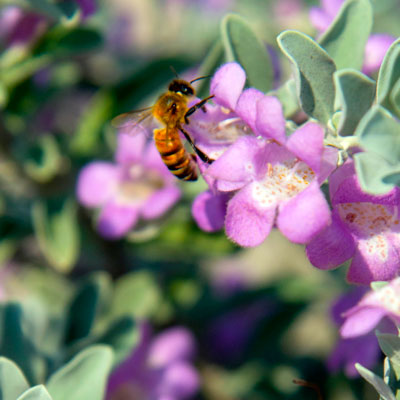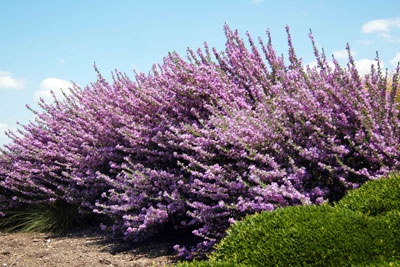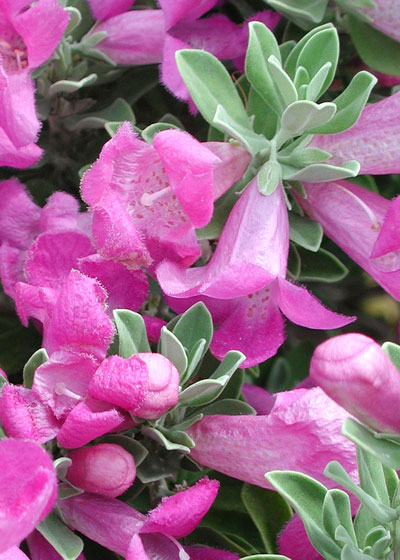Native Texan Makes Good!

Bees are drawn to the summertime blooms of Texas sage.
My dad did herbicide research for Texas A&M as he assisted sheep and goat ranchers in the Hill Country and Southwest Texas. I tagged along with him on many of those trips, and I fell in love with Leucophyllum frutescens, the native Texas sage. It wasn’t grown very widely then, and you rarely saw it in nurseries outside of its native habitat.
But let me tell you my back story. The remnants of a tropical storm blew through that Uvalde-Camp Wood-Leakey area one of those summers. It rained heavily for 24 hours, leaving us stranded back in the work cabin near Dad’s research plots. Two or three days after the rain, while the streams were still rushing and therefore impassible, the hills came alive with glorious lavender blooms. And that was how I met Texas sage.
By time I graduated from high school in College Station, started at A&M and transferred for two degrees at Ohio State, then taught and finally came back to serve as Dallas County Extension Horticulturist in 1970, this plant had hit the big time.
I worked in the same Dallas facility as the late Benny Simpson, long recognized as one of the finest native plant people Texas has ever produced. Benny and Lynn Lowrey of the Houston area traveled widely collecting both seeds and specimens. I don’t know how much each contributed to the research, but I do know that Benny had a plot of probably 200 Texas sage variations, and from those he began to introduce new colors and growth forms.

North Texas planting of Texas sage in bloom following summer showers.
Cultural Guidelines
Texas sage is winter-hardy to Zone 8. Those of us who live in the DFW area have seen it damaged in recent winter cold spells, so plant it accordingly. From Waco south, it should be fine. However, it requires full sun and perfect drainage. Best news of all: it’s quite at home in alkaline soils. (Few flowering shrubs are.) Lace bugs are about the only pests that bother it.
Variety Information
If you go into garden centers today, you’re going to see variety names like ‘Green Cloud’ (greener foliage), ‘White Cloud’ (white flowers), ‘Compacta’ (shorter habit) and others.

Ceniza plants go from solid gray-green to blankets of pink-lavender in a matter of one or two days.
